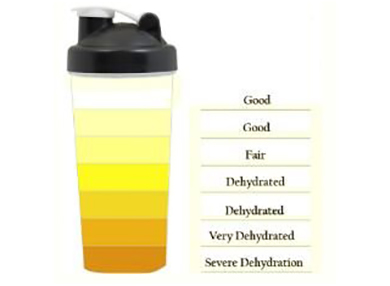Approximately 60% of the human body is made up of water. If we do not drink water, we cannot survive for more than a few days.
Water is found in our cells, organs, and blood vessels. So why do we not prioritise hydration every day? Many of us are focused on our training and nutrition but water consumption is not always prioritised.
Water is important for temperature regulation (through sweating and respiration), digestion, circulation, and excretion of waste. When we are dehydrated these processes do not occur optimally and can result in some unfavourable symptoms.
During exercise, it is vital we prioritise our water intake, even before the session. Entering a workout dehydrated can leave the body under stress where our ability to regulate body temperature is impacted and results in an increase in body temperature and heart rate.
Inadequate water consumption during training can also leave you feeling lethargic, dizzy, or even onset of cramping. Our performance during exercise relies heavily on our water intake and is something to keep track of if you aren’t feeling your best in a session.
It is also recommended to sip water during exercise to maintain your water levels and post exercise to replenish any fluids lost, particularly during higher intensity sessions.
Instead of following basic guidelines such as 8 glasses a day or 2-3 litres based on how active you are, try learning the signs of dehydration so you can monitor your own water intake.
Four signs you’re dehydrated:
- dark urine
- mouth and tongue feels dry
- constipation
- headaches and poor concentration.
Tips to stay hydrated:
- increase fluid intake through herbal teas. We know when it’s cold it’s harder to keeper fluid intake as normal
- add fruit to flavour your water if you find water boring
- drink water with every meal
- keep a water bottle on your desk as a constant reminder to sip on water throughout the day
- eat foods that contain a high percentage of water (cucumber, watermelon, lettuce etc)
- buy a big water bottle (at least 1L). Aim to drink one 1L before midday, and 1L after midday. Break it down into small hourly goals if that's easier for you.
By Veronica Lee